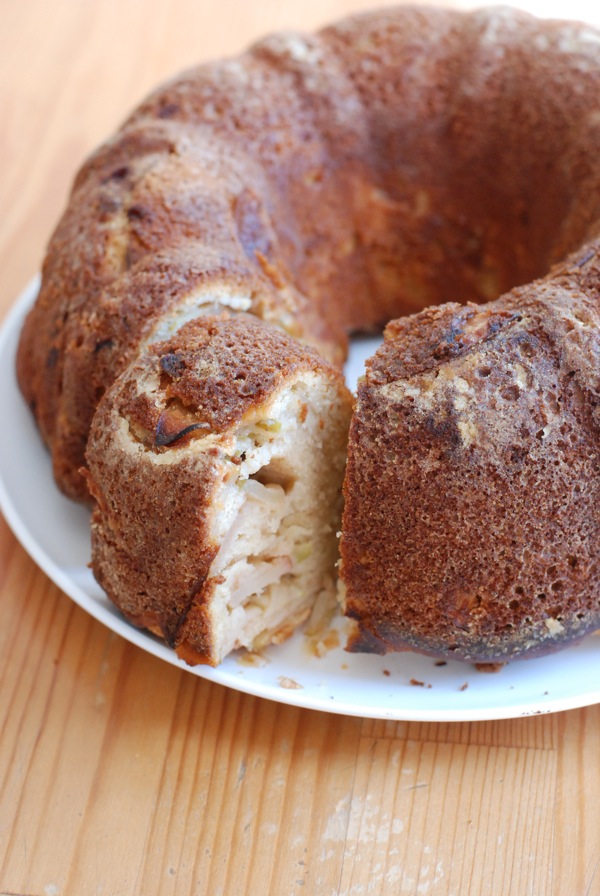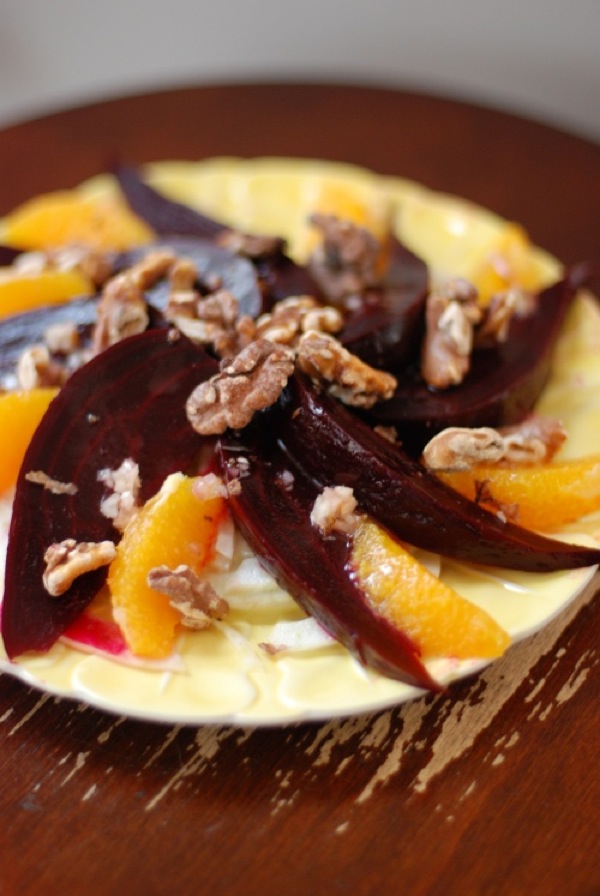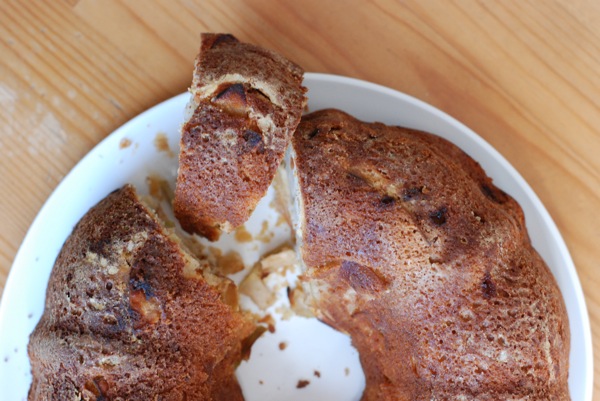For years, I shied away from making this cake. Almond-flavored desserts tend to be quite polarizing. Most folks are at least satisfied with vanilla ice cream or sugar cookies (even as we maniacal addicts wish we were eating chocolate), but plenty of people, when presented with almond cake, would rather go to bed with no sweets at all, "you-didn't-eat-your-peas" style.
And yet, the more I read about this cake, the more enticed I was. Adam Roberts, the estimable-if-amateur Amateur Gourmet, called it "the almond cake to save your soul." In her new and wonderful cookbook, Amanda Hesser says it's the cake she gifts most often. And countless others have made, and subsequently raved about, this cake. I had to try it.
I was so eager, in fact, that I made it with one less yolk than it called for, and of course, because this is me and I'm, well, special, I overcooked the thing. Naturally, it didn't come out very good. I wondered if people were hyping up a mediocre cake. Were they making themselves feel better when dessert just wasn't worth eating?
No, no they weren't. They were making the cake according to the instructions. Amazingly, if you actually do that, what results is a phenomenal, phenomenal cake. Go figure.
I've since made this cake 2 more times, making sure to actually follow the instructions. Friends, it's worth doing that. The cake is almondy, for certain, but not at all in an offensive way. It's uber-moist. It's better on day 2 than on day 1. And with just a dusting of powdered sugar, it's actually quite beautiful. If you don't love almond flavor so much, you might actually still enjoy this cake. Just ask D, who -- to my surprise, since she's not much of an almond fan -- came home from work one day and said Riv, I'm actually loving that cake. Like I said; go figure.
World's Best Almond Cakeadapted from Amanda Hesser
A couple notes about this recipe. First, about almond paste. The standard brand is Odense, which can taste a bit cloying right out of the tube. The cake mellows the flavor a bit. Still, I wanted something more refined, so the second time around, I used Mandelin brand, which -- frankly -- is way better than Odense. Tastes like almonds and sugar and not much else. Also, very expensive, so kind of a special-treat situation. Try it.
Hesser initially called for the cake to be made in a stand mixer, which makes for a light yet moist cake. However, while on vacation with her family and without access to a mixer, she used a food processor instead, and what resulted was a cake with what she described as a more "downy" texture. This sounded appealing to me, so I used a food processor all three times I made this cake. Big thumbs up on the texture -- but if you'd prefer to use a stand mixer, go for it. I trust Amanda's instinct. (Who wouldn't?)
I made a couple adjustments to the recipe (of course I did) - I added a bit of vanilla to offset the almond, and I also added a bit of lemon zest, which brightens an otherwise very sweet cake. Do as you wish.
Lastly, this is a sinker of a cake. It's just so: the middle will dip once it comes out of the oven. Don't let the depressed center make a depressed baker, though - the cake is no less delicious.
2 sticks unsalted butter, softened, plus more for buttering pan 1 cup sour cream, at room temperature 1 teaspoon baking soda 2 cups sifted all-purpose flour (measured after sifting) 1/2 teaspoon sea salt 1 1/2 cups sugar 7 ounces almond paste, cut into small pieces 4 egg yolks, at room temperature 1 teaspoon almond extract 1 teaspoon vanilla extract zest of half a lemon Confectioner's sugar, for sifting over cake
Preheat oven to 350. Generously butter sides and bottom of a 9-inch springform pan. Mix together the sour cream and baking soda in a small bowl. Sift the flour and salt in another bowl.
Using a food processor or stand mixer (see note above), cream the butter and sugar until fluffy. Add the almond paste, a little at a time, at medium speed, and beat or process for 8 minutes. Beat in the egg yolks one at a time, mixing until incorporated. It will look curdled, but don't fret. Blend in the almond and vanilla extracts, the zest, and the sour cream mixture. If using a mixer, reduce speed to low and gradually add the flour mixture just until incorporated. If using a processor, Add flour mixture all at once, and give a few pulses, just until flour disappears into batter.
Pour the batter into the prepared pan and spread evenly. Bake for about 1 hour. It is done when you gently press the top and it resists. The finished cake will shrink from the sides of the pan. Transfer to a baking rack to cool in the pan. When ready to serve, sift confectioner's sugar over the top.




 It's a new year: resolutions abound. Taking my friends at their word, 2011 will see the end of lateness, the renewal of grammar anal-retentiveness, and
It's a new year: resolutions abound. Taking my friends at their word, 2011 will see the end of lateness, the renewal of grammar anal-retentiveness, and 



